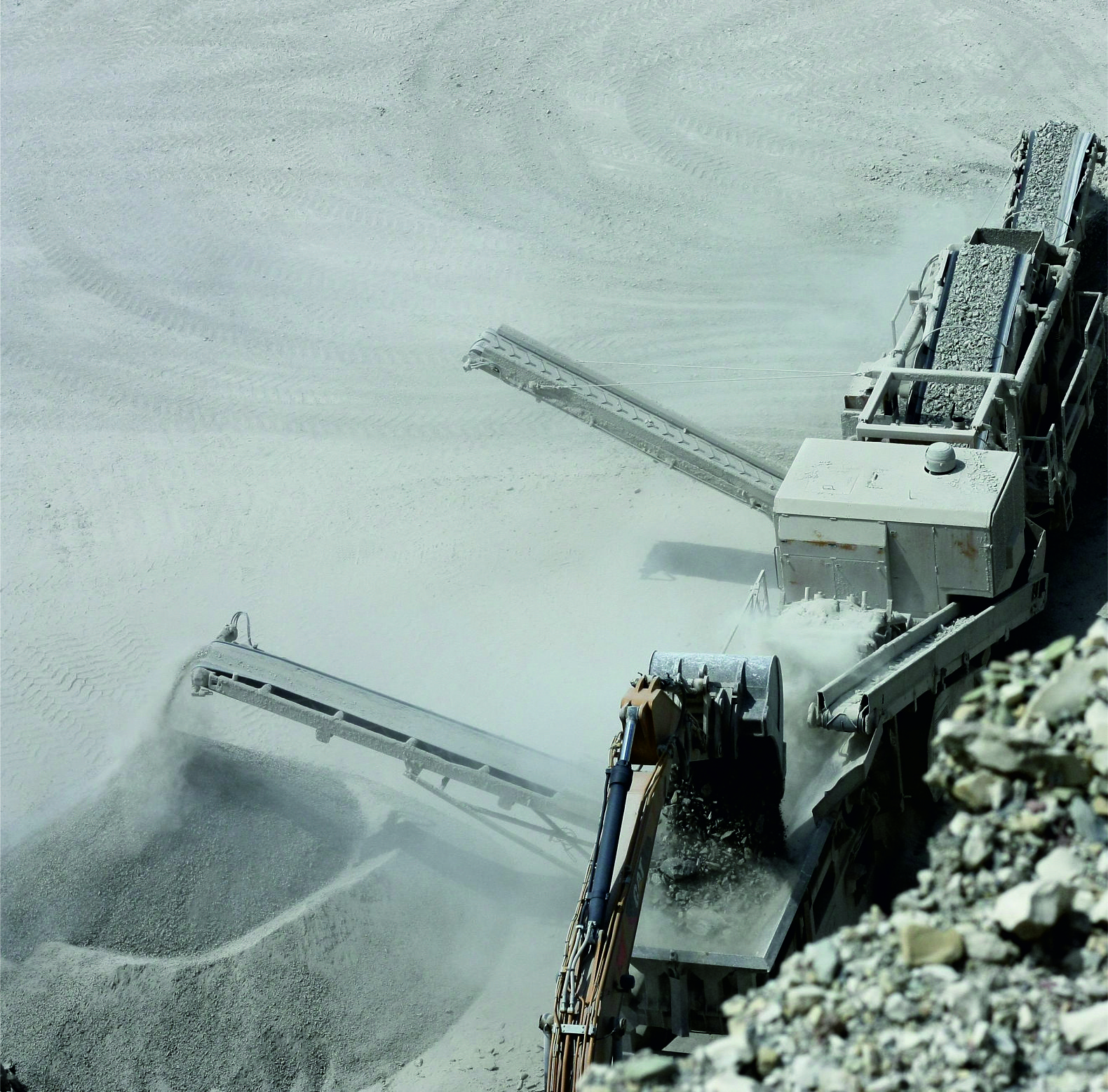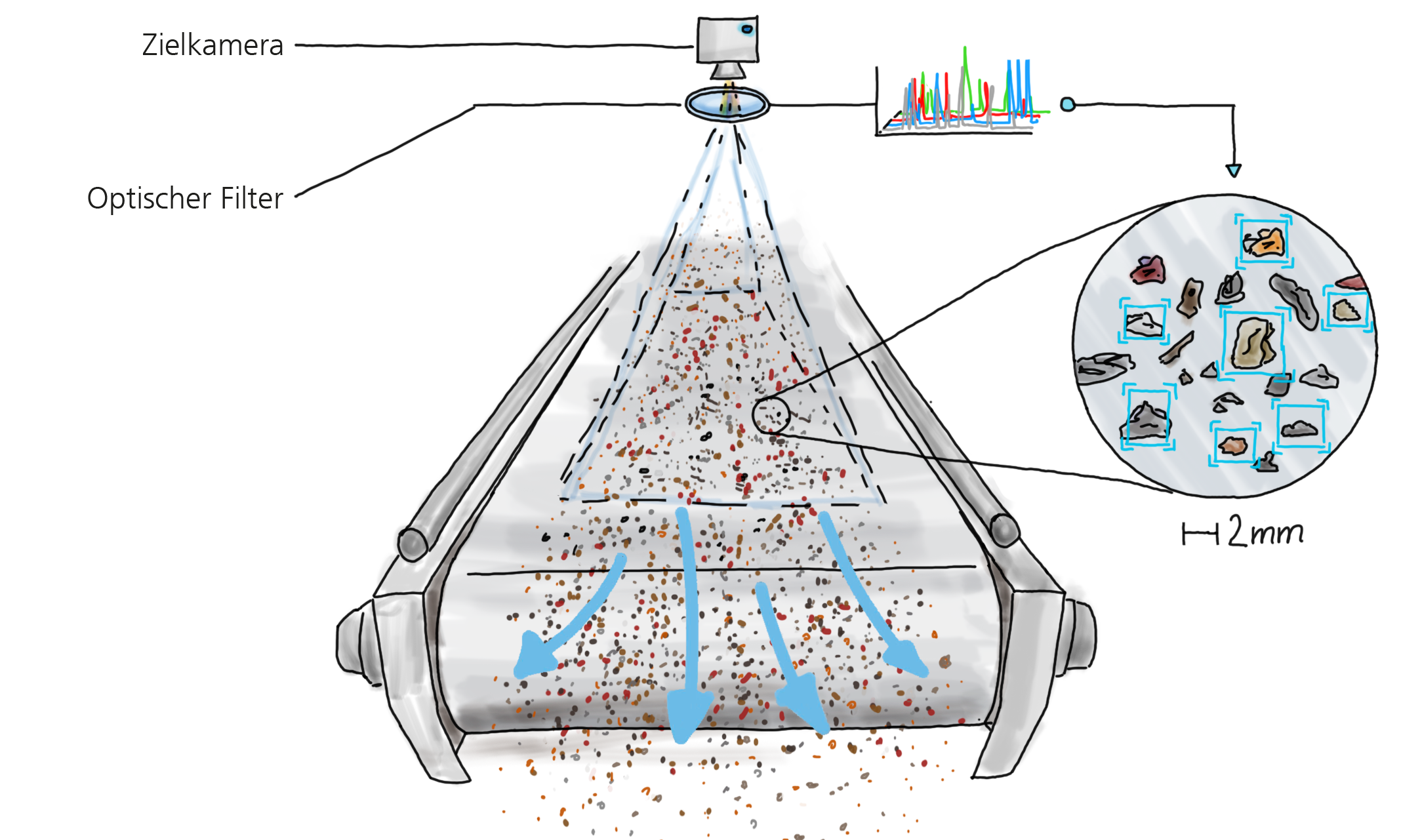The Fraunhofer project BauCycle: Recycling of fine-grained construction waste
Many raw materials are becoming increasingly scarce. This applies not only to oil or rare metals, but also to industrially usable sand. Sand is finite and in some countries even scarce, because beach or desert sand is not suitable for construction; it is too small and too round. But the worldwide construction boom requires vast amounts of gravel, other rocks and even building sand for the production of concrete, bricks or plaster. In order to counteract this shortage of resources, four Fraunhofer Institutes have been working for three years on the recycling of mineral building materials from demolition materials as part of the "BauCycle" project. The aim was to enable more sustainable construction through a holistic recycling strategy. The scientists tested new methods for sorting construction waste, examined application options and developed a product from the recycled material in order to save primary raw materials. Following the successful completion of the project, "BauCycle" was named the winner in the "Research" category by the German Sustainable Building Council DGNB e.V.


In 2016, the construction industry used 563 million tons of mineral resources. The demolition of buildings generates approximately 54 million tons of construction waste every year. The mechanical processing of this waste produces around five million tons of fine fractions smaller than two millimeters. Due to their heterogeneous composition, this quantity is almost invariably deposited in landfills. This procedure still exists today. At the same time, the resources of domestic quarries are already almost exhausted and new quarrying areas are scarce. In order not to completely exhaust the finite deposits of construction raw materials and to provide reliable, cost-effective materials, the Fraunhofer Institutes for Building Physics IBP, for Material Flow and Logistics IML, for Optronics, Systems Engineering and Image Evaluation IOSB and for Environmental, Safety and Energy Technology UMSICHT joined forces in 2016 and analyzed and developed new recycling possibilities for construction waste in the Fraunhofer internally funded project "BauCycle". The results are to be further developed in follow-up projects to show concrete strategies for a more sustainable construction industry. The research consortium is in intensive exchange with the Fraunhofer Building Innovation Alliance, which has set itself the task of informing industry and politics about current trends, resulting needs and potential solutions for the construction industry. Since new, advanced building materials have been developed from the recyclates within the project, "BauCycle" not only offers solutions for the business field "Resource Efficiency", but at the same time also for the Alliance's "Advanced Materials" division.
The processing of building rubble and its recycling
Initially, the project team was concerned with the development of a process for the optical sorting of building rubble in order to selectively separate its main components concrete, brick, sand-lime brick and gypsum. The mineral composition of the building rubble was analyzed spectroscopically according to chemical criteria using a hyperspectral camera and used as sorting parameters. A purity of approximately 99.5 percent was achieved in the respective material groups. In parallel, the scientists worked on building product samples and recipes, for example for aerated concrete blocks, in which 30 percent by mass of the primary raw material sand could be replaced by the extracted, fine-grained building rubble. The team also produced cement-free building materials on the basis of building rubble. They developed an acoustic plaster with a 60 mass percent recycled content for interior applications, which has a comparable acoustic quality to the products commonly available on the market. The developed product samples were subjected to an orienting sustainability assessment and were presented in January at the Bau 2019 trade fair in Munich.
In the final step of the project, the research group produced a demonstrator for a market platform through which building rubble fractions can be traded and in which various sources and sinks of primary and secondary raw materials are intelligently networked..
Award of the German Suistanable Building Council
As confirmation of their successful work, the project participants were awarded first prize in the "Research" category for the "BauCycle" project at the annual conference of the German Sustainable Building Council DGNB e.V. on June 25, 2019. "The award shows that we have hit the nerve of the times with the 'BauCycle' project," says Dr. Volker Thome, head of the department of mineral materials and building material recycling at Fraunhofer IBP. Depending on the category and topic, the award winners will receive coaching by suitable experts from the DGNB network and a presence in the DGNB Living Showroom in Stuttgart.
Research continues in follow-up projects
However, the topic is far from being exhausted by the end of the project. Based on the results of the "BauCycle" project, the scientists will continue to work on the functionalization of cement-free building materials and increasing the proportion of recycled materials in the production of cellular concrete and on innovative building products. They also continue to research into the manufacture of cement-free and corrosion-resistant building products.
In addition, further potential recycling routes for the fine building rubble fractions are to be found. The researchers also want to further optimize the sensor-based sorting systems in order to successfully implement inspection tasks away from the topic of building rubble, for example. The focus is on the investigation, use and fusion of problem-specific spectral ranges as well as the application of so-called "hyperspectral imaging" for material recognition image processing. In addition, the Fraunhofer employees apply the methods developed to simulate volatile material flow networks. The basic principles of the market platform are intended to offer customers from various sectors in forward and backward value-added chains tailor-made solutions for increasing efficiency in logistics for a true circular economy.
The project was funded as part of the Fraunhofer internal program for market-oriented preliminary research "MAVO".
Further information on the project is available at www.baucycle.de/en.
Last modified:
 Fraunhofer Institute of Optronics, System Technologies and Image Exploitation IOSB
Fraunhofer Institute of Optronics, System Technologies and Image Exploitation IOSB